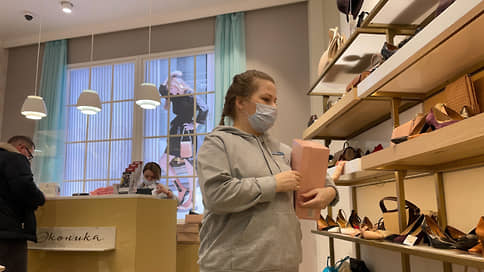2MOOD got new shoes – Kommersant
[ad_1]

Shoe retailer Ekonika, which received a small stake in the 2MOOD clothing chain last fall, increased it to 25%. In exchange, the fashion brand can count on investments to expand its store network. 2MOOD, whose revenue has tripled in a year, has the opportunity to invest in development. For many retailers, the flow of funds has increased due to a rise in the price of collections by a third after the departure of Western retailers. However, according to experts, a further rise in prices in such dynamics is unlikely due to a decrease in household incomes.
The structure of the shoe chain “Econika” – “Esperance” at the end of March this year increased its share from 5% to 25% in LLC “Two moods”, which manages the 2MOOD clothing brand, follows from SPARK-Interfax data. The main owner of the network, Sergey Borisov, gave up his 7.63%, who left 27.8%, 6.19% each – the creators of the brands Kristina Khoronzhuk and Ekaterina Gayur (they now have 22.59% each in Two Moods LLC).
The fact that the structure of Ekonika received 5% in the 2MOOD business was reported by Vedomosti last fall. At the end of last week, at the Retail Update forum, the general director of Ekonika, Sergei Sarkisov, stated. that the company retains several more options to increase its stake in Two Moods LLC. On Wednesday, Mr. Sarkisov declined to comment.
“Esperance” is the operating company of Ekoniki, established in 1992 and now managing 130 stores in Russia and the CIS. According to Kartoteka.ru, Andrey Iliopulo (52.35%), Vadim Kirillov (19.03%), Sergey Sarkisov (18.63%) and Alexey Kostyushin (9.9%) own the shoe chain through Novard Group Management Company. The company’s revenue in 2022 reached 10.45 billion rubles, which is 26% more year-on-year, net revenue is 1.18 billion rubles. (growth by 24%).
If Ekonika decided to increase its stake in 2MOOD, it means that the company is convinced of the sustainability of the network’s business model, says Maria Chelyadenkova, managing partner of Fashion Factory School. In her opinion, such a development of events is logical: the fashion niches of the middle segment, which were occupied by Western brands, after their departure, go to local players.
Kommersant’s source in the retail market says that Ekonika has several more options to increase its share in 2MOOD, but a decision on their execution has not yet been made. According to him, the clothing brand is ready to increase the share of a new partner in exchange for investments in expanding the number of offline stores. Now the brand has nine points of sale in Moscow, St. Petersburg, Yekaterinburg and Rostov-on-Don. 2MOOD failed to get comments.
For “Ekonika”, as a financial partner in expanding the network, the acquisition of a stake in 2MOOD could be penniless, does not exclude the general director of “Infoline-Analytics” Mikhail Burmistrov. He believes that the brand will need investments not only to open new stores, but also to expand collections. “Now local networks can rent large areas for points of sale, but problems arise with the sufficiency of the assortment,” explains Mr. Burmistrov.
At the same time, the departure of foreign brands has led to an increase in the price of collections of local brands. In a number of Russian clothing chains, prices have risen by 30%, says Anna Lebsak-Kleymans, CEO of Fashion Consulting Group. This is also confirmed by the financial results of 2MOOD, whose revenue, according to SPARK-Interfax, in 2022 tripled year-on-year, to 1.05 billion rubles, net profit – up to 180 million rubles, which is four times more than in 2021. But the experts interviewed by Kommersant are unanimous that further growth in clothing prices is limited due to a decrease in the incomes of Russians.
Now for investors in the retail market, according to the director of the CORE.XP retail department Marina Malakhatko, “the cost of a ticket to enter the business of small local networks, showing revenue growth amid the departure of Western brands, is low.” Such deals, she said, allow large retailers to diversify their portfolio of brands based on existing networks. However, the expert warns, the problem of local brands is the inability to scale the business and not always the right choice of the price segment of their collections.
[ad_2]
Source link





